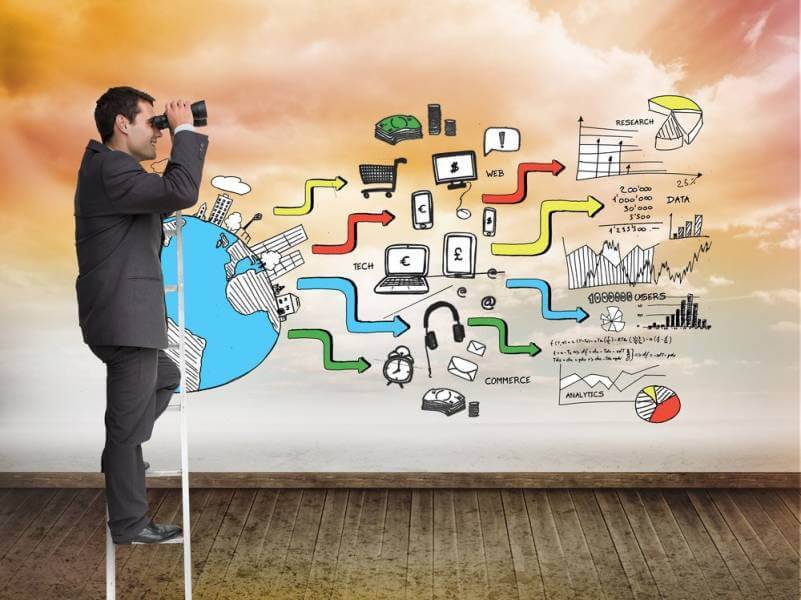When you hear the word “flowchart,” you might immediately think of school projects or those old-school diagrams tucked away in dusty corporate manuals. But in 2025, flowcharts have evolved into powerful tools for anyone looking to organize ideas, streamline processes, and make smarter, faster decisions — whether you’re leading a startup, managing remote teams, or just trying to get your personal projects off the ground.
Let’s dive into why flowcharts are more important than ever, how they can boost your productivity, and real-world tips to make the most out of them.
What Is a Flowchart (and Why Should You Care)?
At its core, a flowchart is a visual map of a process. It shows steps, decisions, and outcomes, usually in a way that’s easy to follow at a glance.
In a world overloaded with complex tasks, endless meetings, and data flying from every direction, simple visuals like flowcharts cut through the noise.
In 2025, with the rise of AI and hybrid workplaces, clarity is king. If you can’t explain your process quickly and visually, you risk losing time, money, and team momentum.
The Top Advantages of Using Flowcharts in 2025
1. They Simplify Complex Ideas
Ever tried explaining a complicated workflow over a long email thread or Zoom call? It’s painful. Flowcharts let you break down complex processes into bite-sized, easy-to-understand pieces.
Visuals trigger faster understanding — your brain processes images about 60,000 times faster than text.
In 2025, with teams often spread across time zones and cultures, flowcharts help bridge communication gaps.
2. They Improve Decision-Making
Flowcharts aren’t just about showing what happens — they also show where decisions must be made.
By visualizing different paths, you can spot bottlenecks, redundancies, or smarter shortcuts before you even get started.
Whether you’re mapping a customer journey, a product development pipeline, or a personal fitness plan, a flowchart gives you the helicopter view you need to make better choices.
3. They Save Time (and Money)
Time is money — especially in 2025’s ultra-competitive digital economy.
Flowcharts speed up onboarding for new team members, reduce errors, and make it easier to update processes as your business evolves.
Imagine handing a new hire a simple, visual flowchart instead of a 70-page operations manual. They’ll be effective way faster — and they’ll thank you for it.
4. They Boost Team Collaboration
When everyone sees the process laid out clearly, it’s easier to collaborate.
Flowcharts naturally promote alignment, accountability, and transparency.
Tools like Lucidchart, Miro, and even AI-driven flowchart creators are making it super simple to co-create flowcharts in real-time — even if your team is spread out across three continents.
5. They Make Troubleshooting Easier
Processes break. Mistakes happen. In 2025, resilience is everything.
Having a flowchart means when something goes wrong, you can pinpoint exactly where the breakdown occurred without guessing. It’s a visual blueprint that cuts troubleshooting time by half (or more).
Where You Should Be Using Flowcharts in 2025
Flowcharts aren’t just for IT nerds anymore. Here’s where savvy teams and individuals are applying them:
-
Project management: map out project phases, dependencies, and risks.
-
Sales funnels: visualize lead generation paths and conversion triggers.
-
Content creation: plan blog posts, videos, or podcast production workflows.
-
Customer support: troubleshoot FAQs and escalation processes.
-
Personal goal setting: structure your fitness, travel, or learning plans.
And thanks to AI, you can even generate flowcharts automatically from simple text descriptions now — how cool is that?
Pro Tips for Making Flowcharts That Actually Work
Ready to create flowcharts that aren’t just pretty, but powerful? Here’s how:
1. Keep it Simple:
Don’t overcomplicate it. Use clear shapes, short text, and logical flow.
2. Focus on One Goal:
Each flowchart should answer ONE question (e.g., “How do we onboard new customers?”)
3. Use Colors Wisely:
Highlight different paths, decisions, or outcomes without making the chart look like a rainbow explosion.
4. Choose the Right Tool:
For beginners, tools like Canva are great. For advanced needs, try Lucidchart, Whimsical, or Notion’s new diagram blocks.
5. Review and Update Regularly:
Processes change, and your flowcharts should too. Set a reminder to review them every quarter.
What’s New for Flowcharts in 2025?
Flowcharting isn’t standing still. Thanks to technology, here are trends making flowcharts even cooler:
-
AI-Generated Flowcharts: You can type “Explain our hiring process” and AI will create a full flowchart.
-
Interactive Flowcharts: Dynamic charts where clicking a node reveals more data.
-
Voice-activated flowchart building: Dictate a process and watch it appear in real-time.
Businesses that are adapting these tech updates into their flowcharting processes are moving faster — and winning bigger.
Final Thoughts: Flowcharts Are Your Secret Productivity Weapon in 2025
If you’re not using flowcharts yet, you’re leaving time, money, and efficiency on the table.
In a future where everything is moving faster, where decisions have to be made quicker, and where remote work is the new normal, having clear, visual workflows is not a luxury — it’s survival.
So whether you’re a CEO, a solopreneur, a student, or just someone trying to organize their chaotic side projects, 2025 is the perfect time to level up with flowcharts.
Ready to map your next big move?








